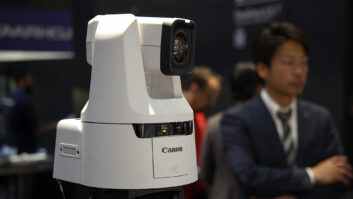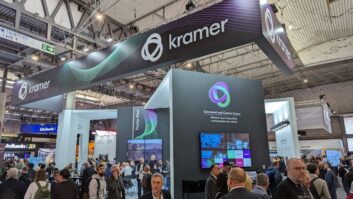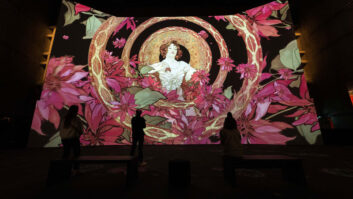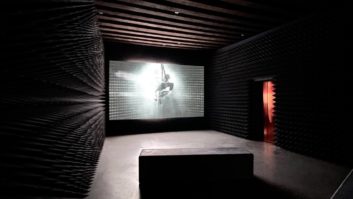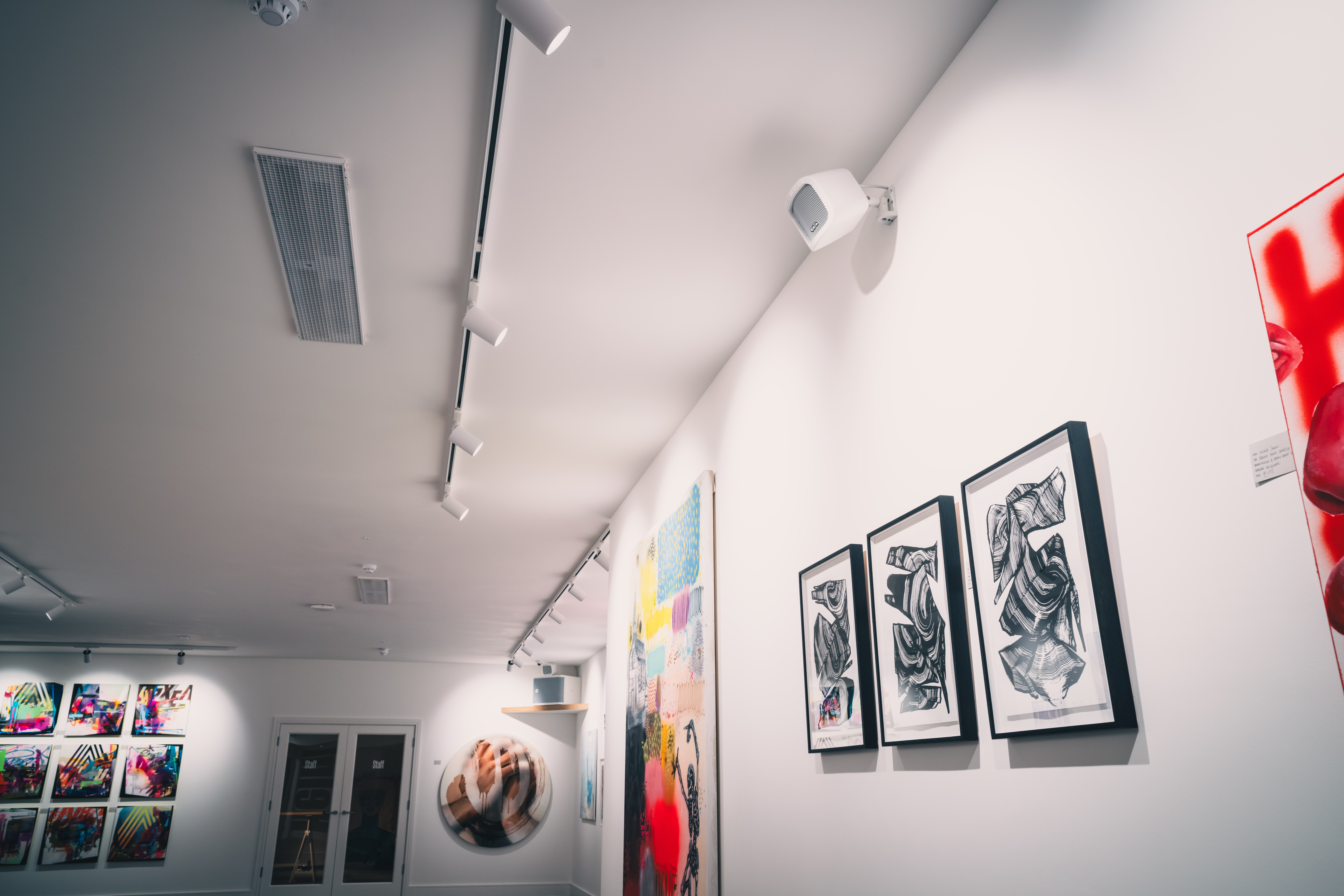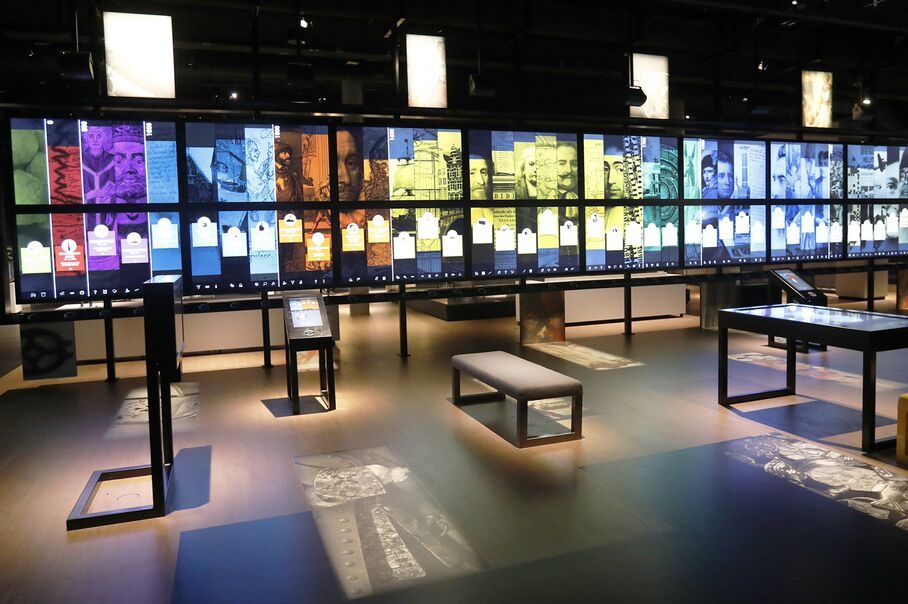
Rapenburg Plaza of Amsterdam has implemented the lighting, show control and AV technologies for the ‘Canon of The Netherlands’, a new exhibition at the Netherlands Open Air Museum in Arnhem.
Opened on September 23, the ‘Canon of The Netherlands’ is said to cover the highlights and low lights of Dutch history from the Stone Age to present. The exhibits combine historical objects on loan from collections throughout the Netherlands with innovative deployments of the latest audiovisual and display technologies.
Rapenburg Plaza worked in collaboration with exhibition architects Kossmann.dejong and a multi-disciplinary team of film, animation and interactive designers.
“We work in parallel with Rapenburg Plaza in most of our projects and they help bring our ideas to life,” said Robert van der Linde, project leader and spatial designer at Kossmann.dejong. “They have an expert, specialist team who work to bring all exhibition elements together in a holistic and creative way. At the Canon of The Netherlands, there is something for everyone. It’s designed to be as interactive and proactive as possible for visitors to discover so much about Dutch history and the Netherlands as an ever changing and evolving country.”
The exhibition is located in buildings, in a partially subterranean dome, and in an underground tunnel. Divided into four sections, it consists of 50 ‘windows’ into Dutch history arranged in 10 broad periods.
All technology was meticulously planned and pre-built as much as possible off-site
Hein Scheffer, Rapenburg Plaza
Stijn van Bruggen, project manager at Rapenburg Plaza explained: “After 18 months of engineering, consulting, technical design and brainstorming, the Canon of The Netherlands is finally ready.”
The first, pre-show section, consists of an entry tunnel adorned with enormous, abstract-shaped, suspended screens, that take the audience travelling backwards into the distant past, seeing people busy at their daily routines like preparing food, lighting fires, and children at play. Next, located inside a giant partially-underground dome structure, is a series of 10 ‘movie set’ exhibits that mix historic objects and interactive learning through gaming, using every possible surface and space as a multimedia canvas.
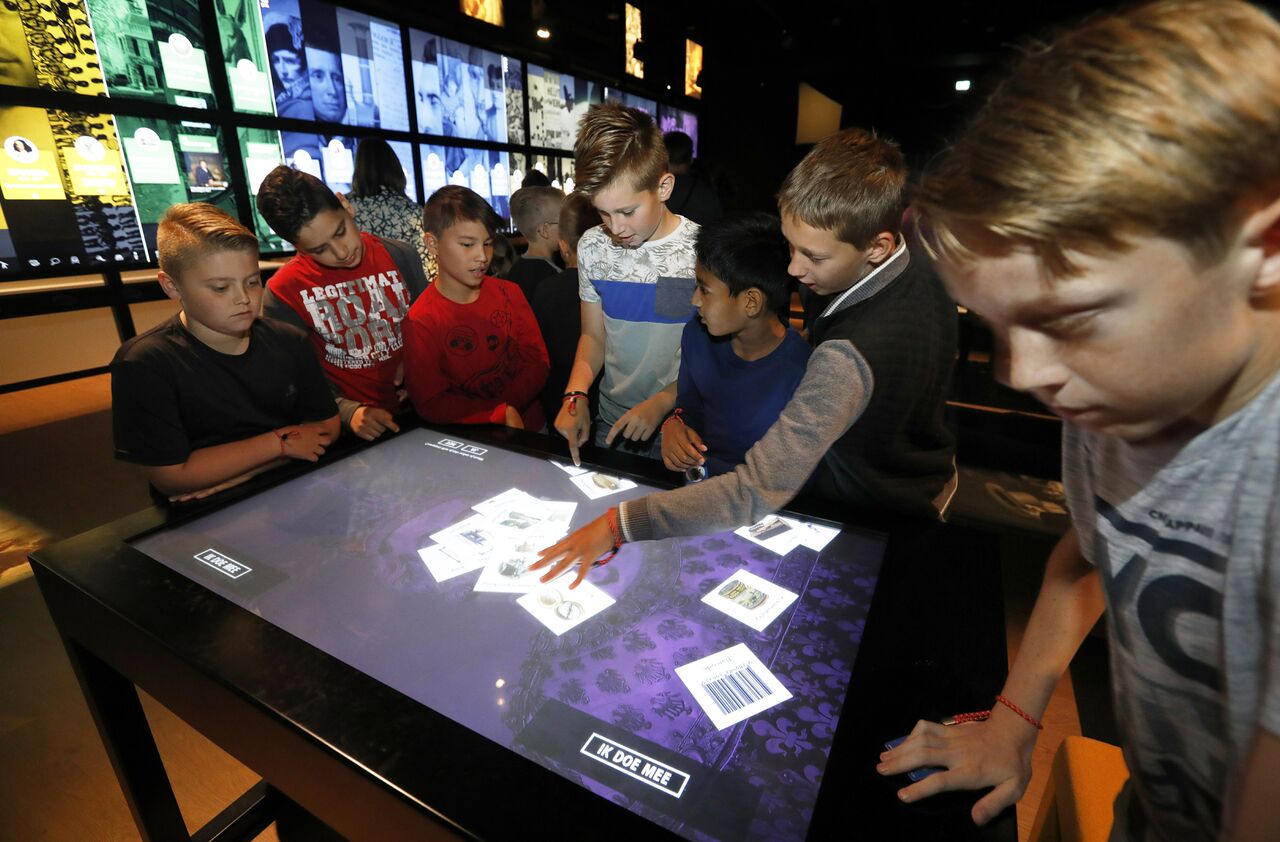
This is followed by a panoramic presentation area with surrounding ‘interactives’ that provide a cinematic and learning experience. Finally, an interactive learning room, with vast walls of touchscreens enables visitors to participate in a learning game while finding out more about the history of the Netherlands.
In the semi-subterranean dome, originally built in 1999 for an attraction named HollandRama and renovated for the Canon, the structure was designed to flex in response to changing weather loadings. This presented some interesting problems for the accuracy and stability of lighting and projection rigs that are focussed on exhibit elements that are attached to the building structure. Rapenburg Plaza’s solution was to use rigid glass rear projection screens to prevent distortion and to fix the projection equipment onto rigid floor mounts that are isolated from the walls of the dome. The building may move with the wind but the projections are literally rock-solid. While the projectors do not move, the eight horizontal ‘cloud’ screens that hang from the dome’s ceiling are suspended thus move together as the building flexes.
In the subterranean cinema, ‘A Bird’s Eye View of Holland’, features different topics on its 3m x 15.3m panoramic screen. The projected image is covered by three Canon XEED WUX6010 projectors blended through Showlogix software and replayed from a Showlogix media server. The huge panoramic images are accompanied by custom made sound created by composer Eric Hense and audio and sound design in co-operation with IJsfontein and Redrum.
“To give the effect of audio being behind the audience, here we used six different multi-track channels sent out to eight speakers Xilica DSPs and 7.1 surround sound,” explained audio and show control engineer Wilfred de Zoete at Rapenburg Plaza.
The interactive learning room is completely dominated by a monolithic 36sqm wall of touchscreen panels, which provide visitors with in-depth coverage of the 50 topics featured throughout the exhibition.
IJsfontein Interactive Media was the company who designed all interactive playful learning and gaming elements at the Canon. Raimond Reijmers, strategist and designer of interactive spaces at IJsfontein Interactive Media commented: “We recognise Rapenburg Plaza in their unique approach in using technology not for making things novelty but to make the visitor experience better. They integrate light, projection, screens, real objects and décor into one living element. The Canon is made for everyone!”
For this project Rapenburg Plaza specified, installed, configured and commissioned, 67 projectors, 66 touchscreens, 46 video players, 103 loudspeakers and 59 audiovisual computers, using some 177 data and video extenders and 33 network switches, over 45km of power and data cables and a capacity of 80,000KwH. Rapenburg Plaza’s created all computers, media players and processors in housed dedicated machine rooms to preserve valuable exhibition floor space and to provide central access for maintenance.
For Rapenburg Plaza, planning was key to the success of the project. “All technology was meticulously planned and pre-built as much as possible off-site before bringing it in the museum, reducing the time needed on site. The project is one we’re extremely proud of in terms of scale, size and technical complexity,” said Hein Scheffer, business development at Rapenburg Plaza.
